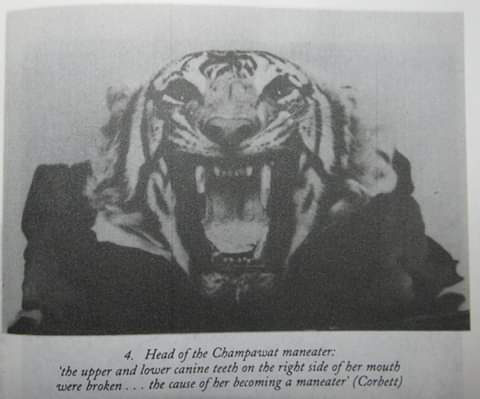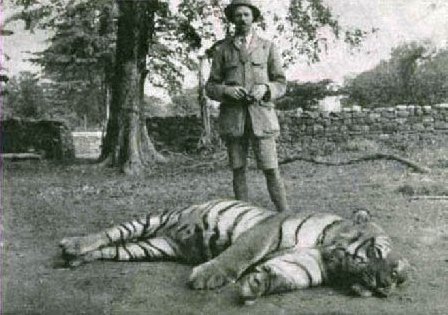Ripley Entertainment Inc.'s Blog, page 206
April 22, 2020
19th Century Mummified Half-Head
Featured in Ripley's Believe It or Not!

Let’s be honest, most of us spend countless hours thinking about the unthinkable: How does life actually exist? Are we actually people, or are we robots? And how did the earliest surgeons figure out how to operate on bodies without people dying in the process? Think about the uncertainty of learning how to literally open a person’s head and look at their brain all while keeping them alive!
Believe It or Not!, we can thank grave diggers for advancements in this medicinal learning—and no, we’re not talking about the Monster Jam Trucks—or perhaps we should call them grave robbers. Gross, we know.
In Central Europe, unclaimed corpses were distributed amongst medical schools by their authorities to be researched, studied, and dissected. But, this was not a practice in the United States…yet. US medical schools needed material to dissect too. So, instead of waiting around for unclaimed corpses, they started sending janitors, students, and doctors to rob and dig up fresh graves.
Bodies on the Move
The Baltimore & Ohio Railroad became the nation’s first common carrier and revolutionized transportation in the US in 1828. Among all the positive ways this new system contributed to the nation, it also sparked a gruesome idea in the heads of medical professionals. This railroad system quickly became a hotspot for corpse transportation; it was the fastest way to send corpses off to the medical schools in the areas that needed the resources for studying and dissections. This system continued to flourish in Baltimore for more than 70 years, making itself known as the center of “resurrections.”

Baltimore became the ultimate grave robbing/body-snatching/grave digging site for a number of reasons: it had the highest demand for “product” as many medical schools were located in the city, and the digging conditions were ideal. Baltimore was Maryland’s largest population center and the grounds were located in a temperate zone with little to no frozen soil regardless of season, unlike the grounds in New England and the Midwest.
Hitting the Bottom of the Barrel
So, here’s how it happened. The robbers began by searching for a freshly buried gravesite. They shoveled at the head of the coffin, broke the lid, and placed a hook around the neck or armpit of the recently deceased. Inch by inch, the thieves slowly eased the body out of the coffin with the help of a rope. After they retrieved their corpse, the robbers folded the bodies into wooden barrels (cringe), filled them with whiskey to mask the odors, and sent them on their one-way ride to be retrieved by medical students and researches.
Side note, if you’ve ever wanted, or really needed, a stiff drink—like something really strong, to take that edge off after a long day at work—you may want to reconsider your choice of words. The “rotgut” whiskey from the barrels was actually sold to the medical students as “stiff drinks.” So, next time you need a drink, you may just want to stick to the word “strong.”
And as if this wasn’t all morbid enough, the gravediggers were seldom prosecuted even though technically the act was a misdemeanor. Lawyers would even argue that because the previous occupant—AKA the deceased—had vacated his or her body, there was no ownership over the corpse anymore. Police acted like it wasn’t happening, politicians protected it in the name of the common good, and most cemeteries were doing deals with these “resurrectionists” anyway.
All-in-all, we’re going to say it took a bit more than half a skull to perfect surgeries and brain operations. And while their stories don’t quite add up to a perfectly happy ending, these involuntary corpses are responsible for more medicinal success than we can imagine. Let’s get real: a woman just had a successful open brain surgery all while awake and playing the violin. And we have those whiskey-soaked bodies to thank for that.
By Michela Pantano, contributor for Ripleys.com
EXPLORE THE ODD IN PERSON!
Discover hundreds of strange and unusual artifacts and get hands-on with unbelievable interactives when you visit a Ripley’s Odditorium!
Source: 19th Century Mummified Half-Head
CARTOON 04-22-2020
April 21, 2020
Measures Taken To Prepare For The End Of The World – Notcast Ep. 38
Featured in Ripley's Believe It or Not!

Nostradamus has a prediction about it. Christians have a whole book detailing it. And scientists are right now preparing for what they will do when we face their version of it. In fact, they’re so confident they say it’s only a matter of time before the human race may be threatened.
This week, we examine theories about the end of the world.




For more weird news and strange stories, visit our homepage, and be sure to rate and share this episode of the Notcast!
EXPLORE THE ODD IN PERSON!
Discover hundreds of strange and unusual artifacts and get hands-on with unbelievable interactives when you visit a Ripley’s Odditorium!
Source: Measures Taken To Prepare For The End Of The World – Notcast Ep. 38
The Tiger Queen: The Story Of The Champawat Tiger
Featured in Ripley's Believe It or Not!

Editor’s Note: This historical tale takes place in the early 1900s; today, behavior like that of Champawat is uncommon. Tigers are one of the most endangered species to walk the planet. Through our combined efforts, we can all work together to protect the life and legacy of these precious beasts.
In 1907, famed British hunter and tracker, Jim Corbett held his breath and steadied his aim. His target? A gorgeous striped murderess infamous for her bloodlust, the Champawat tiger. Corbett’s first shots hit the tigress in the chest and then the shoulder. His last shot, made with a rifle borrowed from the local tahsildar, hit the tigress in the foot. It stopped her mid-charge just 20 feet (six meters) from Corbett’s hiding spot. At that moment, the “Tiger Queen’s” reign of terror came to an end.
Corbett was famed for his big cat hunting skills, yet the Champawat Tiger kept him on his toes. She made him feel just as much the hunted. What’s more, her dangerous nature was well-documented. An estimated 436 deaths in the Kumaon area of India and Nepal were attributed to her. This figure made her the single deadliest tiger in history.

CC Nihal Neerrad S
But there’s more to this story than a contest between man and beast, as Corbett found out during his career hunting man-eaters.
The Bloody Reign of the Tiger Queen
The attacks began in the Himalayas of western Nepal in a Rupal village. Despite the stealth of the massive cat, she left a trail of blood that set hunters headlong in pursuit. Yet, the tiger evaded capture and death. Despite the failed first efforts of hunters, the Nepalese Army knew something had to be done. So, they organized a massive patrol, forcing the tiger to abandon her territory. Unfortunately, danger relocated with her.
Driven over the river Sarda and the border into India, the move did little to slow her thirst for human flesh. In the Kumaon District, she preyed on countless unprepared villagers. The tigress adjusted her hunting strategy to optimize success while diminishing the risk of containment. By some accounts, she traveled upwards of 20 miles (32 km) per day to make a kill and then avoid capture.
She targeted young women and children. They were the ones who most often wandered into the forest to collect firewood, food for livestock, and materials for handicrafts. She only killed during daylight, typical behavior for man-eating tigers. As word got out about the Chapawat tiger’s vicious attacks, daily life drew to a standstill. Hearing the Bengal tigress’s roars from the forest, men refused to leave their huts for work.
Jim Corbett and the Man-Eater
By 1907, locals desperately needed Corbett’s help. Born in the town of Nainital in the Kumaon region (present-day Uttarakhand) of British ancestry, Corbett had earned a reputation for his hunting and tracking skills. Especially when it came to leopards and tigers. But the Champawat Tiger was the first man-eating cat that he ever pursued, and it nearly cost him his life.

Just two days before he brought down the “Tiger Queen,” Corbett tracked the beast by following the blood trail of her latest victim. Premka Devi, a 16-year-old girl from the village of Fungar near the city of Champawat, had disappeared, and villagers and Corbett quickly guessed the girl’s fate.
After locating Premka’s remains and confirming her violent death by the tigress, he nearly got ambushed by the big cat herself. Only two hastily fired shots from his rifle managed to scare the cat away. Only then did he recognize the real danger associated with hunting a man-eater. The Bengal tiger felt no fear of humans.
The next day, with the help of Chapawat’s tahsildar, Corbett organized a patrol of 300 villagers. Around noon, he finally had the murderess in his sights and made the kill. Life could return to normal. Because of the renown he gained by delivering the residents of Chapawat and its surrounding villages from the big cat, he went on to pursue and kill about a dozen more well-documented man-eaters.
The Hunter Turned Author and Photographer
According to estimates, these dozen or so man-eating leopards and tigers were responsible for the deaths of approximately 1,200 men, women, and children. Despite the close call he’d had with the “Tiger Queen” near Chapawat, Corbett always preferred to hunt alone accompanied only by a small dog.
He went on to author Man-Eaters of Kumaon, Jungle Lore, and other books relating experiences from his hunts. He came to a startling conclusion about man-eating big cats in the process. In the foreword to Man-Eaters of Kumaon, he argued, “The wound that has caused a particular tiger to take to man-eating might be the result of a carelessly fired shot and failure to follow up and recover the wounded animal, or be the result of the tiger having lost his temper while killing a porcupine.”
Eventually, Corbett made the switch from stalking animals with rifles to hunting them with cameras. He became an outspoken naturalist, advocating for the protection of India’s wildlife, particularly endangered big cats. For the rest of his life, he continued to sound the alarm about the plight of wild cats and other threatened wildlife. In 1968, one of the five remaining subspecies of tigers was named after him, the Indochinese or Corbett’s tiger (Panthera tigris corbetti).
By Engrid Barnett contributor for Ripleys.com
EXPLORE THE ODD IN PERSON!
Discover hundreds of strange and unusual artifacts and get hands-on with unbelievable interactives when you visit a Ripley’s Odditorium!
CARTOON 04-21-2020
April 20, 2020
Using Death To Bring Home Décor Pieces To Life
Featured in Ripley's Believe It or Not!

Looking back, that first gallery show was symbolic.
“I watched average gallery visitors react to my art in surprise, horror, and intrigue,” he says. “Several approached me to talk about the emotions my art guided them to explore, as well as their relationships with death, dying, and the dead.”
Meet Jeremy Ciliberto, the 31-year-old owner of Catacomb Culture.
“I create functional home decor out of hyperrealistic human bone sculptures,” says the Scranton, PA, native. “It’s a sculpture, mold and casting technique.”

Jeremy Ciliberto, creator of Catacomb Culture
Inspired by the Latin saying “Memento Mori,” which translates into “Remember that you must die,” Ciliberto says our contemporary culture fosters us with a denial of death, which creates deep-rooted end-of-life anxieties.
“I create my art to re-balance culture, allowing individuals to live in harmony with one’s own mortality, resulting in a more fulfilling and conscious life,” he says. “Since I make each bone by hand, each sculpture means a lot to me. With that said, my human bone chandeliers and XL lamps typically require 50-plus bones and always exceed my expectations.”
His first oddity art market allowed him to meet the dark art and oddity community. “The markets invite us all to find comfort and support in each other’s individuality,” he says. “They are the best places to meet like-minded people, artists, collectors, and unique individuals.”
The piece he finds most irreplaceable? “My food-safe human skull bowl,” he says. “Collectors of these pieces share photos of their meals online which makes any meal much more exciting.”
View this post on Instagram
CARTOON 04-20-2020
April 19, 2020
CARTOON 04-19-2020
April 18, 2020
CARTOON 04-18-2020
April 17, 2020
Anne Boleyn’s Decapitation Conversation
Featured in Ripley's Believe It or Not!

Divorced, beheaded, died. Divorced, beheaded, survived. That’s about the extent most of us know King Henry VIII’s wives, and—let’s face it—grim as they are, the beheadings get all the glory. Anne Boleyn might be the first of the six that comes to mind for that very reason, but did you know that there were reports her head tried to speak after the fatal chop? Are these bogus stories, or is there scientific evidence that a head can remain conscious after it has separated from the body?
Queen for just three years, on May 19, 1536, Anne Boleyn, second wife of King Henry VIII, was executed by beheading within the confines of the Tower of London.
Anne, about 35 years old, was found guilty of high treason. She had been charged with having intimate encounters with five men of Henry’s court—including Henry’s BFF and her own brother. According to the indictments, not only had she slept with these men, but she had also conspired with them to kill Henry. So, whether these indictments were true or not—and many think she was framed, plus Henry wasn’t much of a loyal partner either—off with her head it was!
In Anne’s last moments, she knelt down in preparation for the executioner’s blow, and began to pray loudly. In an instant, the executioner beheaded Anne with a single strike of his sword. Some eyewitnesses reported that Anne’s lips continued to move for several seconds after her beheading. Did she remain conscious? Is that even possible?
The debate comes down to voluntary muscle reactions vs. pure consciousness.
Some believe movements, like Anne’s, are simply the result of the voluntary muscles that control the lips and eyes spasming after a shock. This is probably true for the rest of the body, but the head is home to our motherboard—the brain. With a clean cut like Anne’s, the brain would not have received any trauma and could very possibly continue to function until inevitable blood loss.
How long it could function is really unknown. Studies in small mammals have found that consciousness can last from four to 29 seconds, and we know that that chickens can run around with their heads decapitated for several. This is actually horrifying if you think about it—even just for four seconds. Just count to four and take in everything around you. Now imagine that plus the shock and the panic.
Now, the most famous case of surviving decapitation has already been covered on Cool Stuff Strange Things—that’s Mike the Headless Chicken. Mike survived being decapitated for 18 months. How is this different than what I just presented, you ask? Mike’s not-so-fatal blow cut at an angle through his brainstem, just missing the parts of his central nervous system that control basic functions. A well-placed blood clot also stopped him from bleeding to death.
As for Anne Boleyn’s last words, it was likely a muscle spasm or hyperbole in the Tudor press. Believe It or Not! nobody had thought to even have a coffin on hand for her burial, so an old elm chest from the Tower armory was used. Anne’s head and body were placed in the chest and buried.
Ripley Entertainment Inc.'s Blog
- Ripley Entertainment Inc.'s profile
- 52 followers









